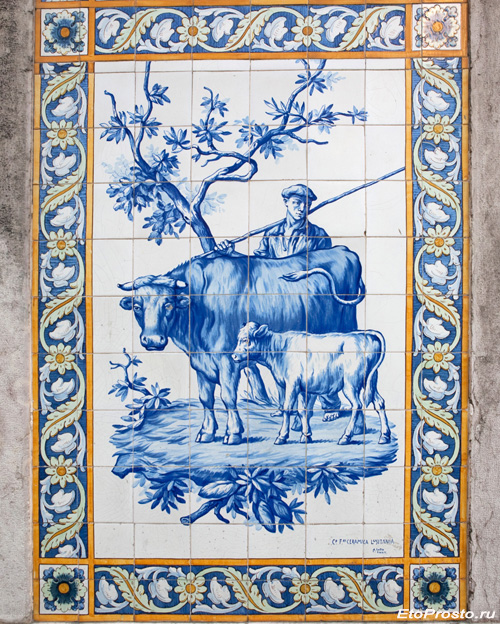

The fact that Portugal produces a lot of ceramic tile is known to many - this small country is a member of the leading twenty international countries in tile production and one of the top ten in tile export. Additionally, in Portugal tile is one of the traditional cultural elements that the Portuguese are very proud of.
Azulejo - the name given to tile by the Portuguese - can be seen here everywhere: on the façade and inside of historic and modern buildings, in churches, palaces and monasteries, at the local markets, train and metro stations and, of course, in regular houses. The tile is used on the façade of many houses not just for aesthetic pleasure - it protects the walls from quite a moist Atlantic climate and saves the city dwellers from heat in the summer.
The origins of tile in Portugal started from Mauritania, which, besides other things, is reflected in the name of the tile - azulejo - which comes from the arabic word لزليج (al zulayj), meaning polished stone. Additionally, tile here is created with traditional Arabic ornaments, but between the 15th and 19th centuries its look was transformed by the influence of different cultures:
- in the 15th century, the traditional muslim star ornament was adopted in tile production;
- in the 16th, the majolica technique was borrowed from Italy, as well as religious and day-to-day episode depiction, which were typical to the Renaissance era
- in the 17th century, influenced by the Delft tile from Holland, Portuguese tile became monochrome with blue images and a white background;
- in the 18th, during the restoration of Lisbon after a destructive earthquake, Marques de Pombal thought that tile is a great house decorative element and not only churches and palaces started being decorated with it, but regular houses as well. The style received a name Pombaline - in honor of the Marques. During this time, tile started having a utalitarian function, not just a decorative one.
- in the 19th century, tile ceased being an element of luxury and the use of azulejo became a daily thing;
- today, the tile is widely used for decoration of different private and public buildings and train and metro stations.
Let's see what tile in Portugal looks like today.
Traditionally, church façades are decorated with tile
Igreja de Carmo churt in Portu is one of the examples of the Portuguese baroque era with neo-classicim elements. This large ceramic panel depicts the scene of the foundation of the order of Carmelites on Mount Carmel in Israel. The panel was created by Silvestre Silvestri.
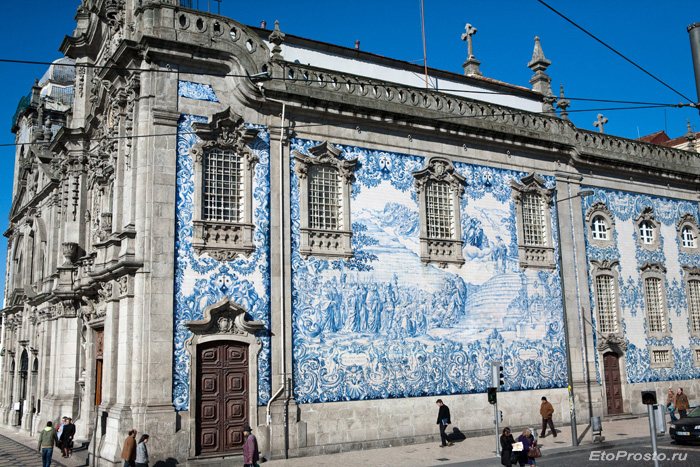
The Carmelites close up

Igreja de S. Ildefonso church, located on the Batalha square in Portu. The panel depicts scenes from the life of Saint Idelfonso and was created in 1932 by Jorge Colaço. The panel consists of approximately 11 000 azulejo tiles.
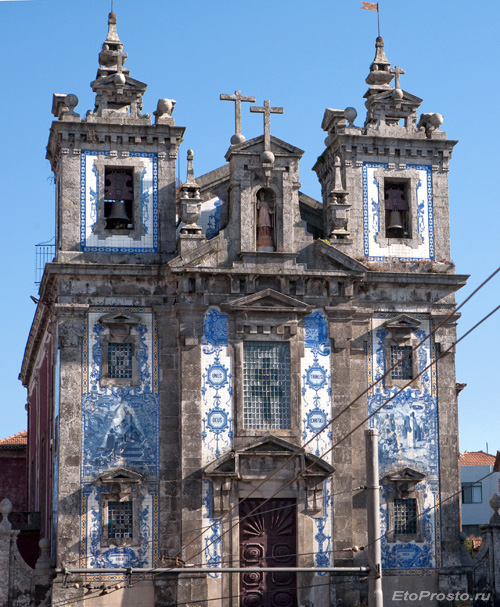
Igreja dos Congregados in Portu was created in 1703 at the place of an old 1662 chapel, which could no longer fit in all parishioners. The author of this ceramic panel is also Jorge Colaço.
Another church. The panel depicts Infante Henrique, also famous as Prince Henry the Navigator - a national hero and the loved infante of Portugal, who was christened in this church in 1394.
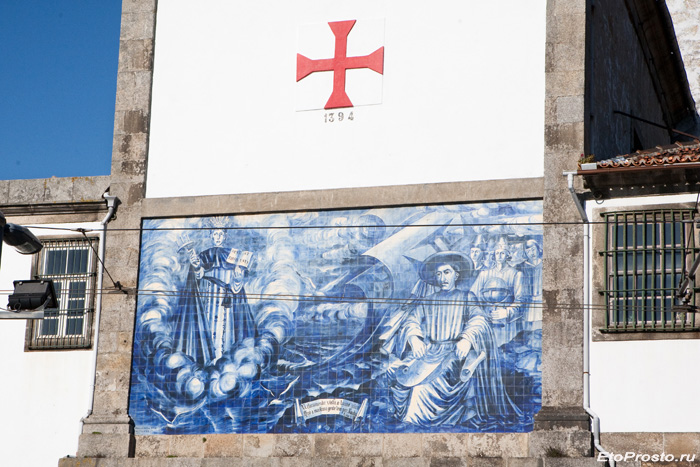
Public buildings' tile
The São Bento train station in Portu looks more like a museum than a train station. It was built at the beginning of the 20th century at the place of an old Benedict monastery. A large tiled panel depicts landscapes and illustrates the ethnographic scenes and historic developments of Portugal. The panel consists of more than 20 000 tiles and was created by Jorge Colaço.

Let's take a closer look...
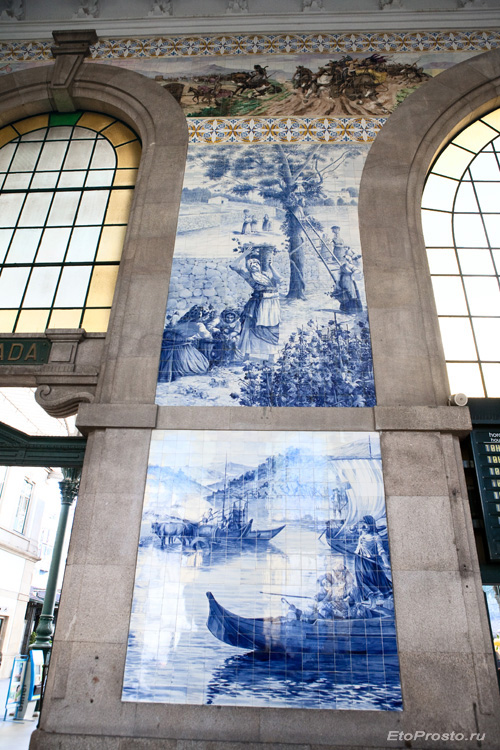
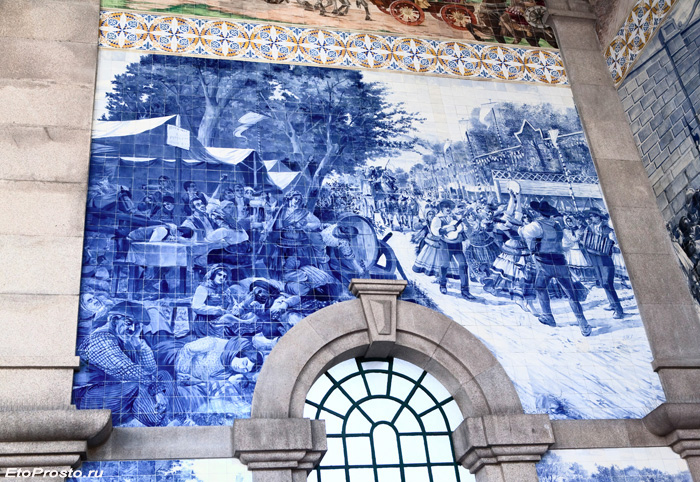

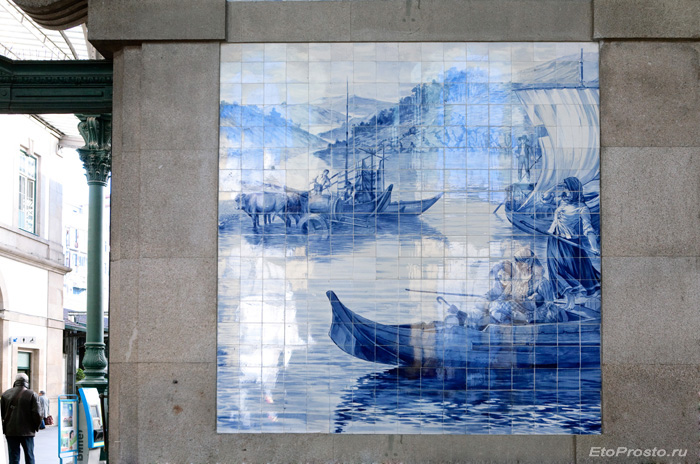
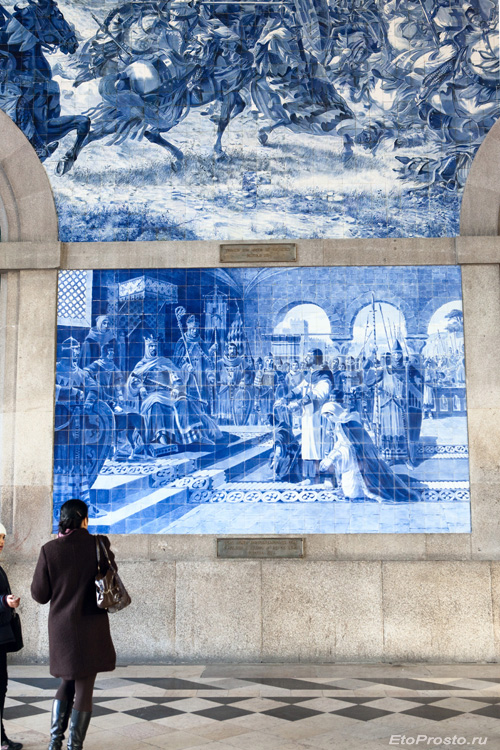
Azulejo is also used for decorating of the Cais do Sodre train station in Lisbon.
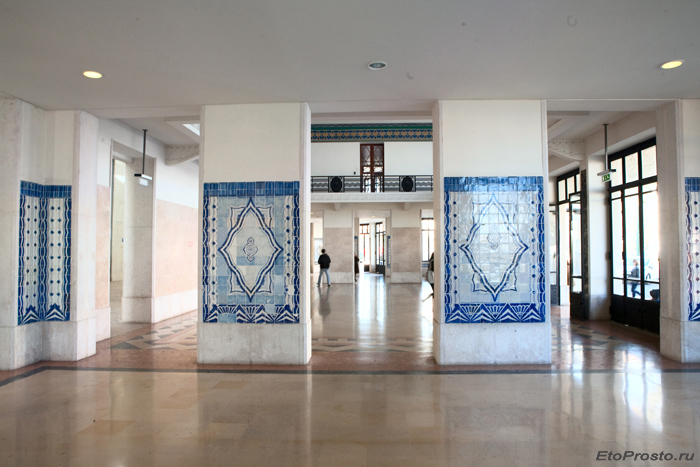
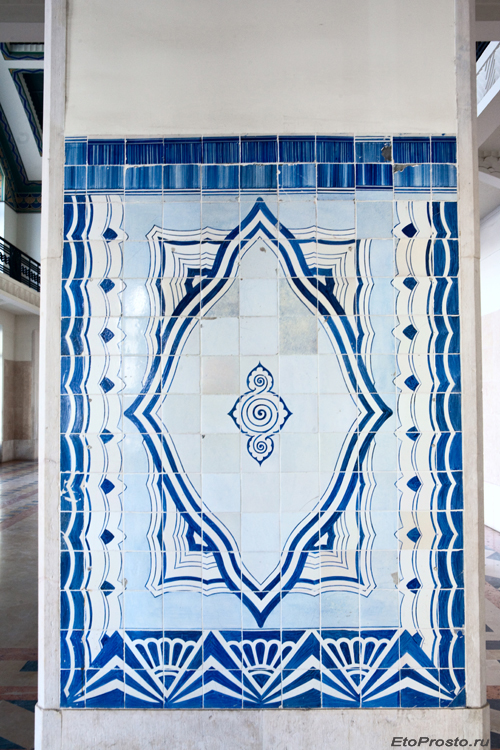
Mercado da Ribeira in Lisbon was built in 1882 and is located close to a dock where fisherment used to bring their catch. Today, the market is a cultural house, on the first floor of which people still sell fruits, vegetables, fish and meat. Azulejo was also used for the decoration of this market.
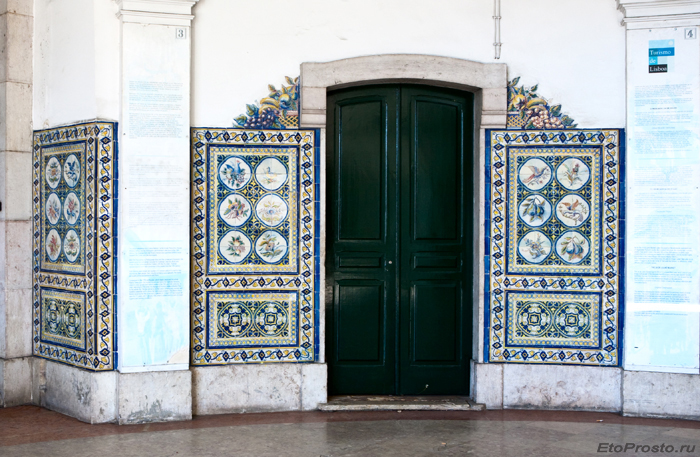
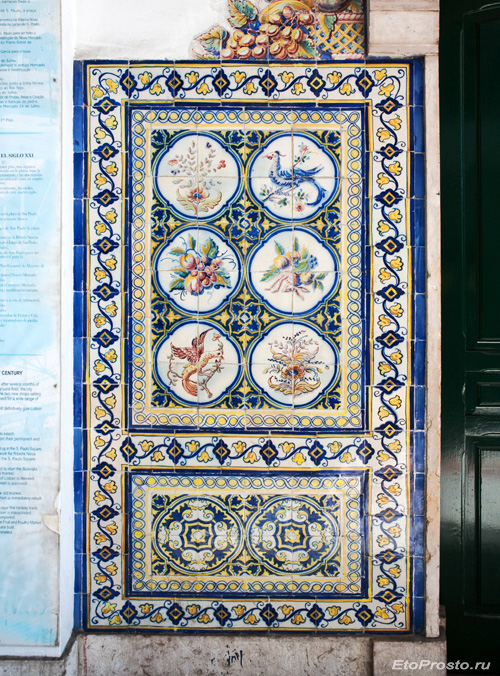
In Lisbon, on Infante Santo Avenue, modern buildings each show an original tile composition, with not one of them repeating. Júlio Pomar, Alice Jorge, Sá Nogueira, Carlos Botelho all took part in decorating the city's buildings and the author of this specific panel - Maria Keil - also worked on 19 metro stations in Lisbon.
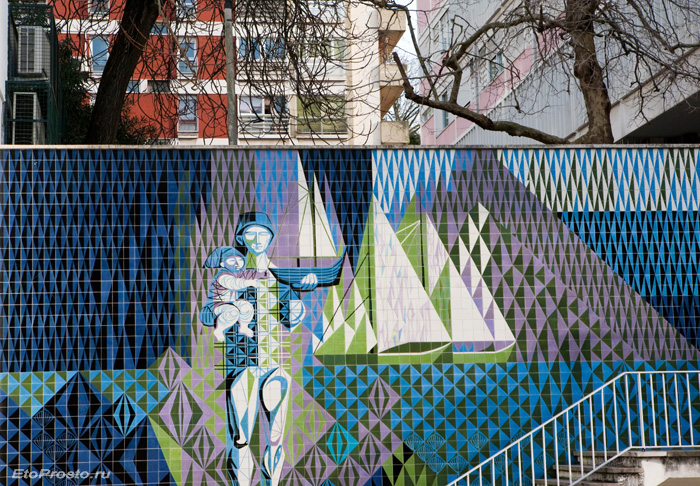
The author of this composition is Carlos Botelho
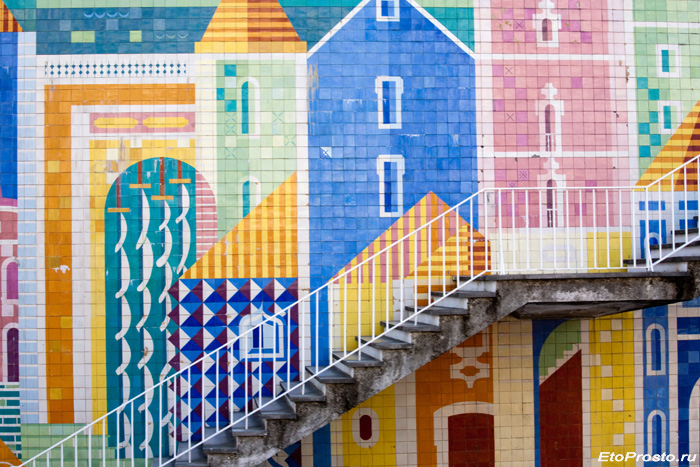
The authors of this composition are Alice Jorge and Júlio Pomar

Rolando Sá Nogueira created this panel
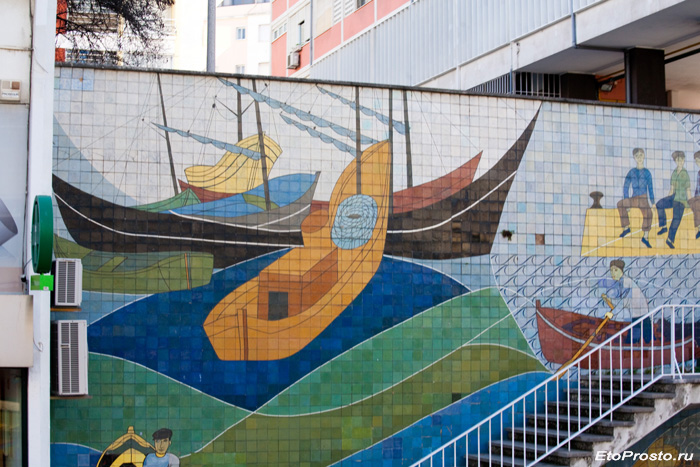
The Avenue ends in a tunnel, the walls of which are layed with multi-colored tile.
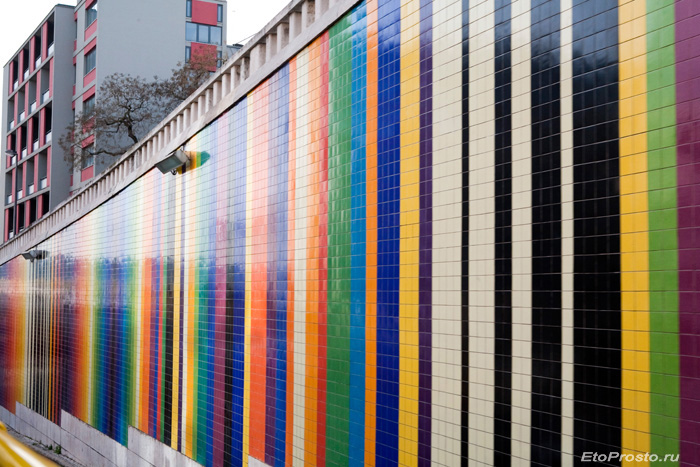
Right before entering the Lisbon zoo, one can see the same animals that live there, but created out of tile on large pillars by Augusto Cid

The façade tile of private homes
Most houses in Portugal are build with azulejo on their façades. It can be of very different colors (though blue still prevails) and sizes and be of different condition.
Three dimensional tile.
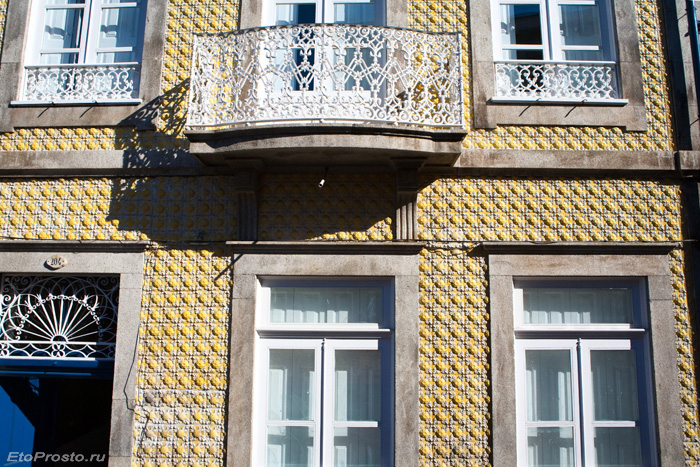
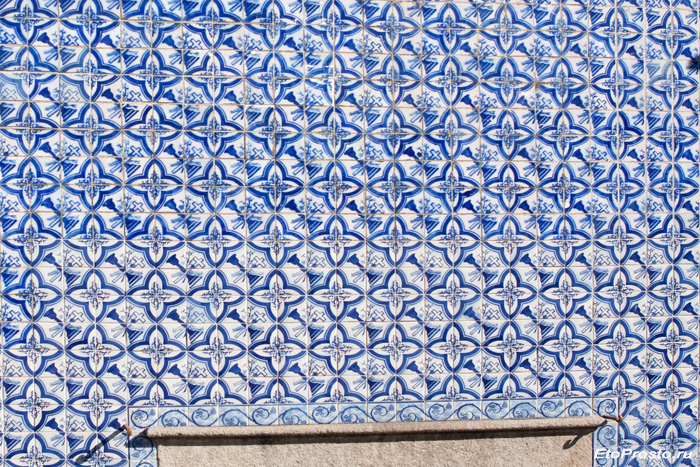
A checkered house.
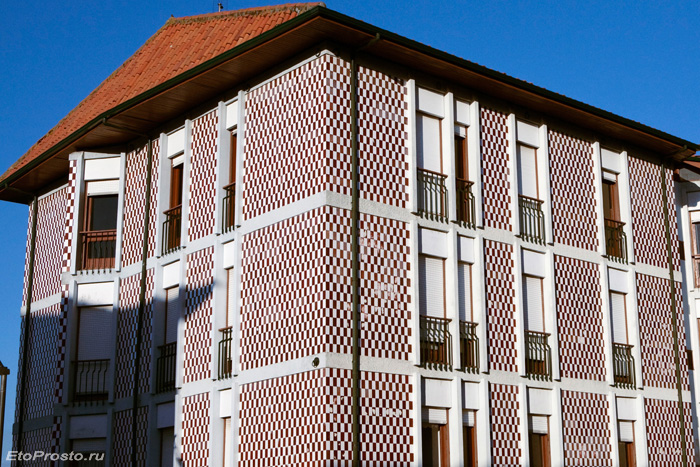
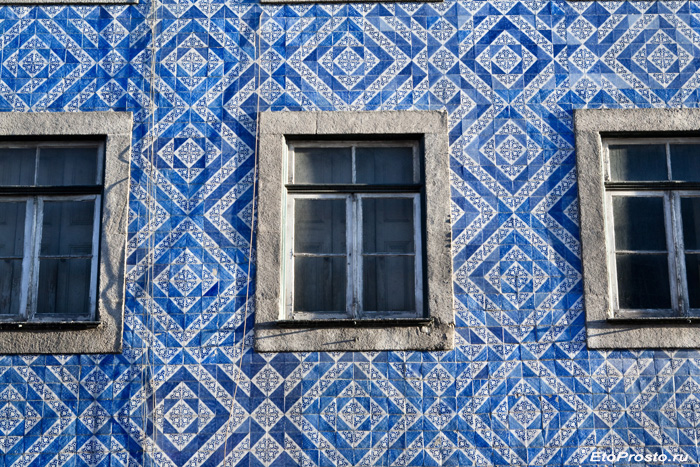
A very rare red tile.

There is a lot of blue tile.
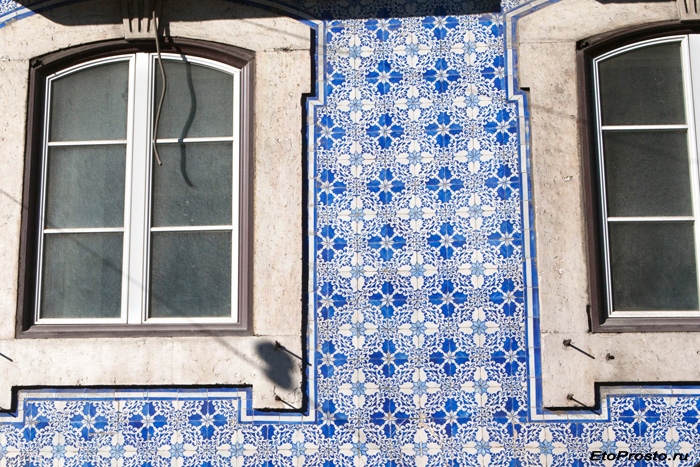
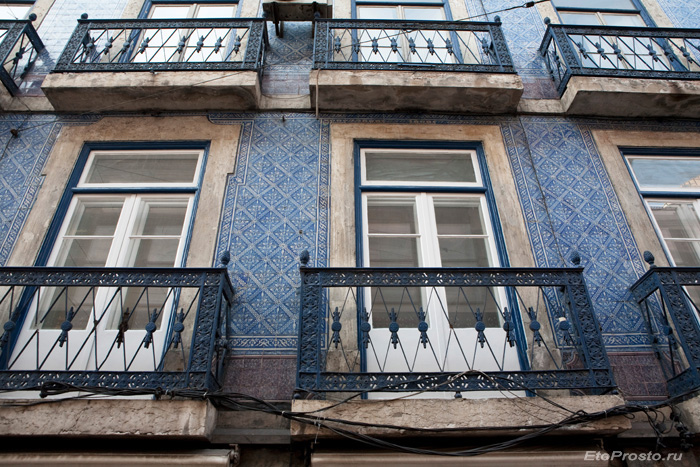


Tile without a design.
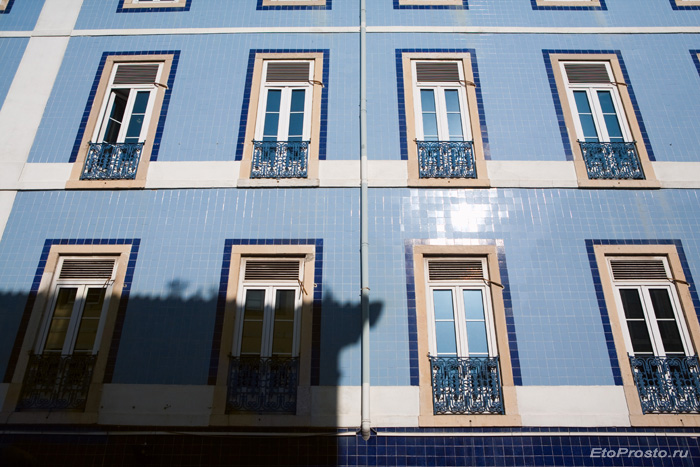
A façade of a house in a poor neighborhood.
A façade of a house in a rich neighborhood.
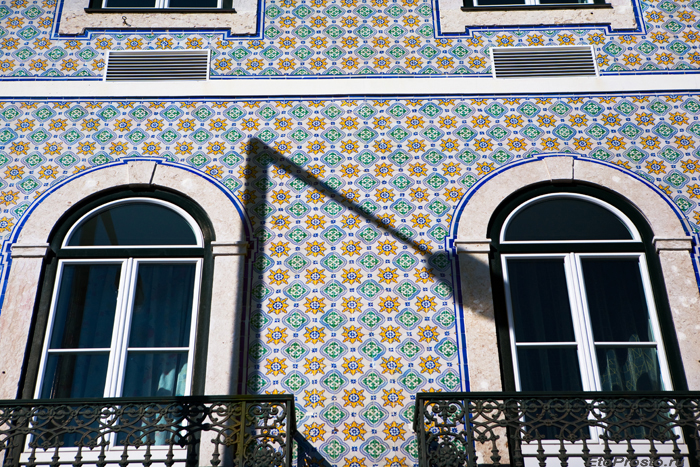
Even if the façade of a house is not completely tiled, tiles will be used for plaques with house numbers and street names, as well as in the form of panels and other decorative elements.
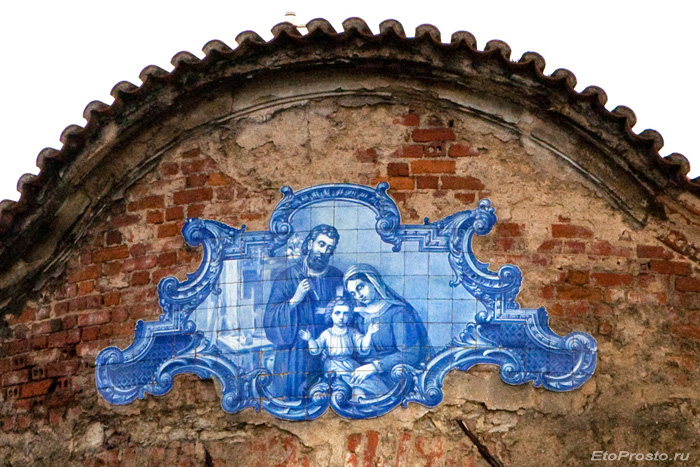
Portraits of the Portuguese poet Camões are tiled on the vault of the Patio Do Tronco arch, which is the place of an old jail that Camões was placed in after a fight with one of the King's horsemen.
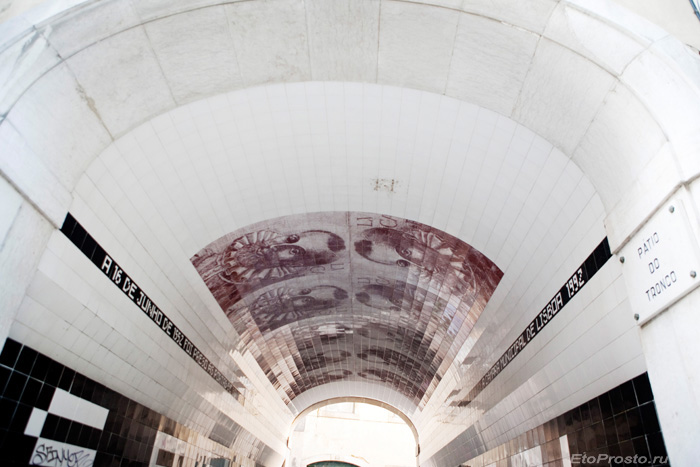
A pastoral composition made of tile.
